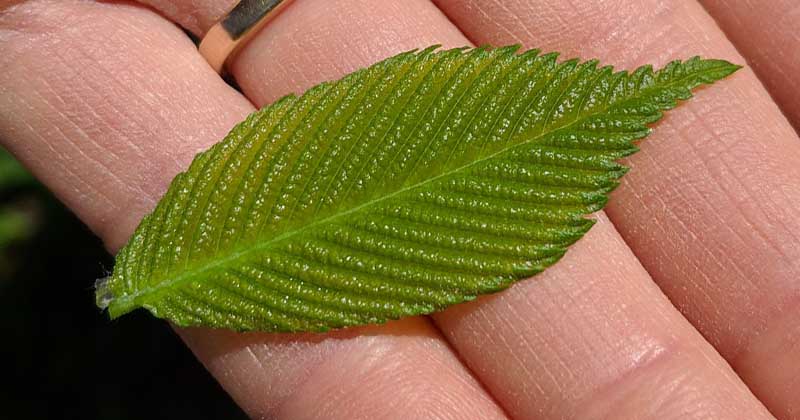Slippery elm bark is one of the oldest natural medicines from North America. While some natural medicines don’t live up to their hype, studies consistently support the health benefits of slippery elm bark. More recently, the bark has gotten a lot of attention for treating GI disorders like IBS and leaky gut.
Before you take slippery elm bark for GI disorders, here’s what you need to know about how it works, how to take it and dosage.
Recommended Products:
- Hawaii Farm Slippery Elm Bark Extract: Glycerin-based extract wtih a 1:3 menstruum ratio. Take up to 1ml per day (which gives you 60 days worth of extract).
- Organic Slippery Elm Bark Powder: 1lb package of sustainably-sourced powder from the inner part of the bark, great for putting into smoothies or making into tea.
See all my picks for best slippery elm supplements here.
What Is Slippery Elm Bark Used For?
Slippery elm bark is best known for treating sore throats and cough. However, numerous studies show that slippery elm bark helps reduce symptoms in gastrointestinal diseases and disorders. It is used to treat:
- GERD
- Acid reflux
- IBS
- IBD
- Gastritis
- Diverticulitis
- Leaky gut
- Diarrhea
- Constipation
How Slippery Elm Helps GI Problems
Slippery elm helps treat GI issues in three ways: soothing the digestive tract, reducing inflammation, and balancing gut flora.
1. Soothing the Digestive Tract
Slippery elm bark contains a sticky, gel-like substance called mucilage. It helps coat the stomach and intestines, thus soothing them and helping them heal. Slippery elm is even considered more mucilaginous than licorice root – one of the best known natural remedies for GI issues.
Gastric and intestinal mucus are incredibly important because they protect the GI tract from damage. If the mucus becomes damaged – such as from poor diet – the GI tract can become incredibly inflamed. As is the case with leaky gut, the gut can become so inflamed that holes can form, thus allowing toxins into the bloodstream. (1, 2, 3)
Numerous studies show that the mucilage in slippery help helps treat GI disorders. For example, this study found that an herbal formula with slippery elm bark was more effective than acid-suppressing drugs for treating GERD or gastric irritation.
2. Reducing Inflammation in Gut
Slippery elm bark contains potent antioxidants called tannins which reduce inflammation. They work by regulating the genes associated with oxidative stress. The bark also improves immunity by reducing cytokines. In these ways, slippery elm reduces inflammation throughout the GI tract. (4, 5) Damaged gut tissue can also produce reactive metabolites which may be pathogenic. One study found that slippery elm antioxidants prevented these metabolites from oxidizing.
3. Balancing Gut Flora
Another way that slippery elm bark helps gut health is by balancing gut flora. Gut flora refers to all of the bacteria and microorganisms which live inside our intestinal tract. These gut microbes “talk” to our organs and have a huge influence on our health. When gut flora becomes unbalanced, it can cause GI problems. Unbalanced gut flora is also linked to psoriasis, mood disorders, obesity and heart disease, to name just a few.
Studies show that slippery elm bark helps balance gut flora. It primarily acts as a prebiotic, meaning “good” bacteria use it as food. (6, 7, 8, 9)
Does Slippery Elm Bark Actually Work?
Slippery elm bark has been use for a very long time to treat GI issues. There are also many modern studies which support slippery elm bark for treating IBS, GERD, and other GI issues.
For example, one study found a formula with slippery elm bark improved GI symptoms by 56%-62% and reduced their frequency by 64%. (10)
Another study found a slippery elm bark formula significantly improved symptoms and bowel habits in patients with constipation-predominant IBS, though results weren’t as beneficial with diarrhea-predominant IBS. (11)
While it is probably unrealistic that slippery elm bark alone will cure your leaky gut, IBS, GERD or other GI issue, it is likely to help with symptoms. Then you can focus on diet, lifestyle changes and other supplements to heal and cure your body.
How to take Slippery Elm Bark for GI Diseases
Slippery elm bark can be taken as a tea, decoction, extract, or powder. As a tea, it has a sweet taste but does have a thick, slimy texture which is somewhat unpleasant. For this reason, you might prefer to take slippery elm bark as an extract, capsule, or powder mixed into a smoothie.
Do Slippery Elm Bark Lozenges Work for GERD and Acid Reflux?
Slippery elm bark lozenges usually don’t contain enough of the plant extract to help with GERD or acid reflux. They are better suited for sore throats as the slippery elm coats the throat as you suck on the lozenge. For GERD and acid reflux, you will get better results by taking slippery elm bark extract or powder.
Cautions and Side Effects
There are no reported side effects of slippery elm bark. While it isn’t approved for GI diseases, the FDA did approve slippery elm bark as a safe and effective oral demulcent.
It has been reported that slippery elm has abortive effects, and its use by females who are pregnant is not recommended.

